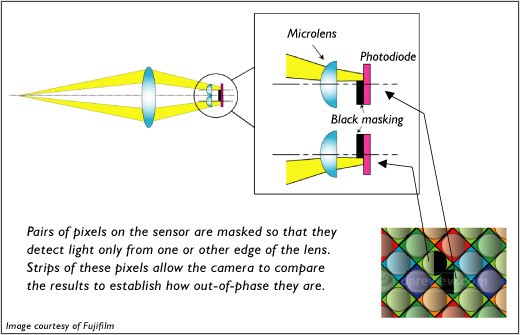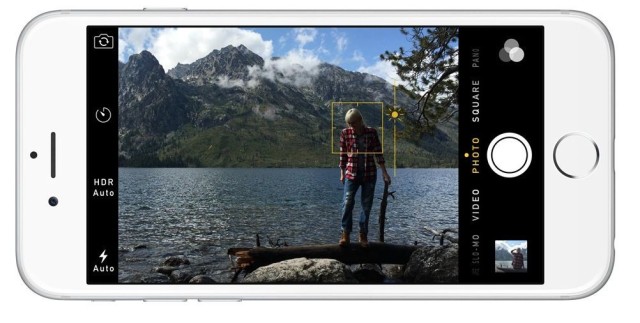Two things strike me about the camera in the new iPhone 6 models. One is that you can take better pictures; the other is that the iPhone is now a much better place for viewing those pictures.
With their bigger, brighter screens — and iCloud’s new Photo Albums feature (which stores all your photos, ready to view, in iCloud) — the iPhone 6 and its larger sibling, the iPhone 6 Plus, are looking to be the best smartphones yet, from a photographic point of view.
Stills
The two new models get the same new sensor, the same ƒ2.2 lens and the same new front-facing camera (also ƒ2.2) that Apple says captures 81 percent more light, making your selfies way better. The front-facing camera also gets burst mode, which was available on the rear camera of the iPhone 5s. And both iPhone 6 models get the new “Focus Pixels” (more on those in a sec).
In fact, in camera terms, the only difference between the two iPhone 6 versions is the addition of Optical Stabilization on the bigger model, likely made possible due to the extra battery capacity and space in the iPhone 6 Plus.
Focus Pixels
The new iPhone sensor has what Apple calls Focus Pixels, which allow for much faster autofocus like you get in an SLR. In the olden days, cameras used a separate sensor just for focus, because the pixels used for focusing couldn’t also capture image info. Therefore, if you put them on the picture sensor, you’d be left with gaps in the image.
A few years ago, Fujifilm started using a sensor that used hybrid “sensels,” or sensor pixels, which could capture light and detect focus. And this led to compact cameras that could use the much-faster phase detection autofocus.
Phase Detection AF

Phase detection works by taking two images from different parts of the lens and comparing them. If they line up, the image is in focus. If they don’t, the camera knows how far apart they are and can calculate how much it needs to move the lens to focus. That’s it in principle — dead simple. It looks like a combo of new hardware (Focus Pixels) and software (the new image-processing chip is fast enough to compute the focus) is responsible for the changes.
The advantage of phase detection over the contrast detection normally seen in phones and compact cameras is that it’s faster and more accurate. With contrast AF, the camera roves around until the image is sharp. With phase detection, it knows exactly how far, and in which direction, to move the lens before it moves it. Thus it can make a quick adjustment to the right spot, in one go.
Phase detection also makes possible the iPhone 6’s new continuous focus in video mode. Contrast detection AF would have to hunt again for focus, even while you’re recording. Phase detection can work out where the focus should be, then go there, with no blurry wavering in between.
In practice, this should make focusing almost instant. Give that focusing is the slowest part of iPhone photography, that’s great news.
Video
Video gets even more new features in the new iPhones, and some of these are thanks to iOS 8. Time-lapse video, for example, comes to the iPhone 5, too (although with Instagram’s amazing new Hyperlapse app delivering excellent time-lapse video, you might not care).

The most impressive feature is the new 240 frames per second slo-mo mode, half the speed (or double, depending on how you look at it) of the slo-mo in the iPhone 5s. You also get 60 fps video in HD in slo-mo so you can replicate the horrible soap-opera effect that Peter Jackson used to ruin the Hobbit movies.
You can now shoot HDR movies, too. HDR is the trick of taking three (or more) images at different exposures — one regular, one dark and one light — and combining them to make one image with more detail in the highlights and shadows. This iPhone 6 does the same, only for video.
Conclusion
Despite the lack of a big headline feature, this camera upgrade looks pretty amazing. Focus speed will help out every time you take a photo, and iOS 8 features like manual exposure and a self-timer (finally) will make the iPhone 6 work much more like a “real” camera. Which is great, as the iPhone is the only camera most people really need.


